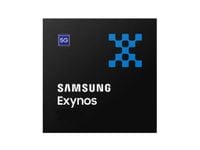Samsung is stirring up discussions with its decision to reintroduce a controversial two-chip strategy for its upcoming Galaxy S26 smartphone. Set to launch in early 2026, the Galaxy S26 will reportedly feature the Exynos 2600 processor exclusively in Europe, while the rest of the world will receive devices powered by Qualcomm's Snapdragon chip. This split has raised eyebrows, as many European consumers have expressed dissatisfaction with the performance of Exynos chips in the past.
The company’s choice to revert to this strategy comes amid production challenges associated with the 2-nanometer manufacturing process of the Exynos 2600. Industry insiders suggest that these bottlenecks are forcing Samsung to limit the availability of its in-house chip to European markets only. As a result, regions such as the United States and Asia will likely benefit from the more powerful Snapdragon variant.
According to a leak from user @Jukanlosreve on X, Samsung is indeed moving forward with its plans to utilize the Exynos 2600 for the S26. Despite the chipset's potential energy efficiency improvements of 15 to 25 percent compared to its predecessor, the low production yield—currently hovering around 40 percent—has raised concerns about its performance capabilities.
Samsung's history with Exynos chips has been fraught with challenges. Previous iterations have often been criticized for lagging behind Qualcomm's Snapdragon in terms of performance, graphics capabilities, and battery efficiency. As one source noted, "Qualcomm's Snapdragon shows a clear performance advantage over Exynos." This longstanding disparity has left many European customers feeling shortchanged, especially as they often receive the Exynos variant of flagship models.
In the past, Samsung faced backlash when it launched the Galaxy S22, which similarly featured the Exynos 2200 in Europe while the rest of the world enjoyed the Snapdragon 8 Gen 1. These complaints appear to have fallen on deaf ears, as Samsung seems committed to maintaining its regional differentiation strategy.
The upcoming Galaxy S26 Ultra is expected to break this pattern, with plans to equip it with the Snapdragon chip globally, mirroring the approach taken with the Galaxy S24 Ultra. This decision could be an attempt to minimize performance discrepancies between models and enhance the premium appeal of the Ultra variant.
Samsung's decision to stick with Exynos chips may stem from a desire to reduce reliance on external suppliers. However, analysts warn that this could alienate European customers, pushing them to consider alternatives from other manufacturers if they feel disadvantaged. The long-term implications of this strategy on Samsung's market share remain uncertain.
Additionally, Samsung's System LSI subsidiary reportedly incurred a loss of about $400 million when the company opted for the Snapdragon 8 Elite in the Galaxy S25 series, which may have influenced the decision to continue using Exynos chips in certain markets. The Exynos 2600 is built on Samsung's 2nm technology, which is expected to improve yield rates, but it still lags behind TSMC, which has achieved a 60 percent yield.
As the launch date approaches, the anticipation surrounding the Galaxy S26 continues to grow. While some consumers may welcome the return of the Exynos chip, others are left wondering if they will be left with a subpar experience compared to their Snapdragon counterparts. The mixed reactions highlight a broader conversation about Samsung’s chip strategy and the potential impact on its brand perception in Europe.
In summary, Samsung's decision to reintroduce the two-chip policy with the Galaxy S26 has reignited debates about the performance of Exynos chips in comparison to Snapdragon. As the company prepares for its early 2026 launch, the implications of this strategy on customer satisfaction and market dynamics will be closely monitored.





